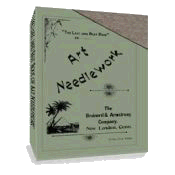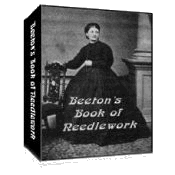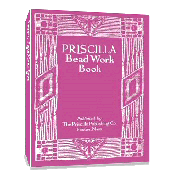Split Stitch
The Split Stitch forms a narrow outline which lies close to the fabric and on this account can be used to better advantage for outlining curves than the Kensington Outline Stitch. This stitch should be worked toward you from a point farther away. It may be made in the hand, but less silk is required if it is worked in a frame. To work it in the hand, bring the needle up at the nearest point of the outline, send it down a little in advance and out again just beyond, as though making a seam or running stitch. Now take a back stitch, inserting the point of the needle in the end of the first stitch instead of beside it, thus splitting the silk. Proceed with this back stitch until the outline is covered. The illustration below shows the stitch as taken when the fabric is held in the hand.

When the stitch is worked in a frame the needle may be sent up through the end of the stitch, thus making a very short stitch upon the under side, instead of the very long stitch required in back stitch. The effect upon the right side is the same.
Return to top of Split Stitch page. Return to Embroidery Stitches page.
Return to Home page.



 433 pages!
433 pages!

